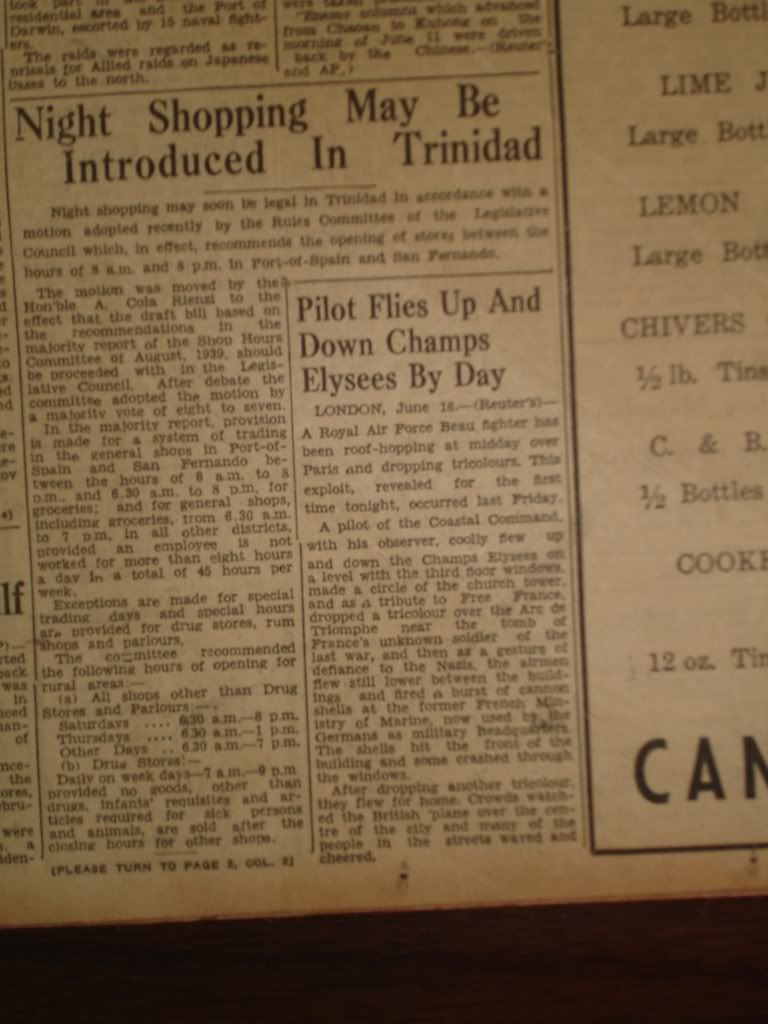Uma bonita histÓria.
Obituary: Gp Capt Ken Gatward
Monday 30 November 1998
KEN GATWARD flew one of the most audacious and daring raids of the Second World War. Informed by the SOE in the Spring of 1942 that the Germans paraded down the Champs-Elysees every day between 12.l5 and 12.45, the Commander-in-Chief of Coastal Command, Air Chief Marshal Sir Philip de la Ferte Joubert, called in Flt Lt Gatward and asked him if he would volunteer for an "unsafe" mission.
Gatward was an immensely skilful pilot who had already achieved fame for his low angle attacks on enemy positions after Dunkirk. Volunteering to fly on day "ops" he would "hop" from wave to wave and attack barges preparing for the invasion of Britain. Without knowing the task Gatward agreed and so did his navigator, George Fern. They were to fly low level down the Champs-Elysees, strafe the parade, and if that failed attack the Gestapo HQ in the former Ministere de la Marine.
In early June 1942 he made three sorties across the Channel but each time had to return because there was no cloud cover. Prior to the next attack Gatward and Fern were given a Tricolour and told to drop it over the Arc de Triomphe. Gatward cut the flag in half and the parachute section sewed iron bars into the material.
On 12 June Gatward took off with Fern from Thorney Island in pouring rain. As he got to the French coast the rain stopped and the sun came out. Even though he had not been given permission, Gatwood decided to take the risk and fly low level over enemy territory, in fact seldom more than 30 feet above the ground.
A startled crow smashed into the Beaufighter's oil cooler radiator causing the oil gauge to read erratically and the temperature to increase. Gatward saw the Eiffel Tower sticking up like a match-stick and at 12.27pm banked to port and headed towards the Champs-Elysees.
"I'll never forget the astonishment of the crowd in the Paris streets as we swept low at rooftop level. They had been taken completely by surprise," he was to recall later. Unfortunately the usually reliable intelligence source had got the time of the parade wrong and he had arrived several minutes early. Fern, however, released the first Tricolour down the flare shute like a harpoon over the Arc de Triomphe.
Gatward had sighted the Ministere de la Marine in the Place de la Concorde, so flew south over the Seine, returning again to rake the building with 20mm cannon shells. The gun fire terrified the SS troops who, much to Gatward's delight, were seen running for their lives. Fern, the quiet ex-schoolmaster from the Forest of Dean, with a large smile on his face dropped the second part of the Tricolour.
Gatward just cleared the Gestapo building and turned for home. He was not only chased by tracer fire but attacked by flies which smacked into his windscreen so that he could barely see, but fortunately it began to rain as he crossed the channel and as bits of the crow began to drop off, the cockpit temperature began to cool. Throughout the raid Fern had been taking photographs and they were both delighted with a clear picture of a large notice outside the Grand Palais which read "La Vie Nouvelle" ("New Life").
The French crow, or what was left of it, was removed and laid to rest at RAF Northolt when Gatward landed. He was later to hear that German troops had been waiting for the parade in the side streets, but the whole ceremony was abandoned because of the confusion caused by the attack.
With bleak news coming in from the Western Desert the excitement created by this spectacular raid raised the morale of the country. The handsome and self-effacing Gatward was awarded a DFC and both he and Fern were feted everywhere they went.
http://www.independent.co.uk/a...gatward-1188262.html



